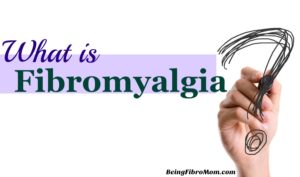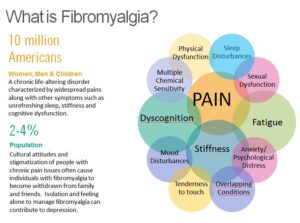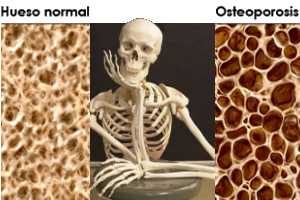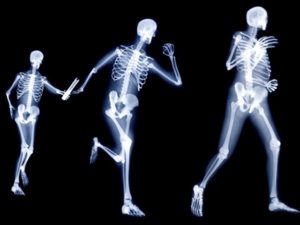“The two most common types of lung cancer that exist are 1 non-small cell lung cancer (NSCLC), which is the most common, and 2 small cell lung cancer (SCLC).”
Lung Cancer Society
“The two most common types of lung cancer that exist are 1 non-small cell lung cancer (NSCLC), which is the most common, and 2 small cell lung cancer (SCLC).”
Lung Cancer Society
“Bee and wasp stings can cause painful swelling that usually goes away within a couple of days. However, in some people, stings can trigger anaphylactic shock, which is a life-threatening reaction.”
Medical News Today
If you are not allergic (the majority of us are not) but you DO get stung by a bee, look for some plantain – chew it up a bit at the front of your mouth – and then spit the chewed up leaf and saliva on the sting.
What do you do if you or your child or family is stung?
One get into a safe area and away from a hive or outside where more stinging insects can come and attack you.
Two look at the area and if you see the stinger DO NOT SQUEEZE IT OUT since you will squeeze out more venom from the stinger but what you can do is get a tweezer and pull it our or if not available you can attempt to scratch it out with a nail (like if you are out camping and have no tweezers for example).
Three than wash the area out with soap and apply ice if the area is in pain to give the numbing affect to the area and decrease the pain with decreasing the venom from spreading.
If the area is itching apply oatmeal or a antihistamine cream to the area to decrease the itching or maybe even a cool bath.
Most stings will cause a small red bump to the area that got stung. For most part they can be treated at home depending on the area that was stung (Foot vs EYE for example). It would also include the reaction the individual has (LOCAL vs SYSTEMIC or even ANAPHYLACTIC=An allergic reaction that needs to be treated immediately or fatal, usually with epinephrine injection.).
Stung in the eye it will get swollen and shut and immediate evaluation from a MD is needed to make sure there is no other injury to the eye or that they didn’t even actually get stung in the eye itself.
If you show hives with DIFFICULTY BREATHING or DIFFICULTY SWALLOWING you NEED TO CALL 911 IMMEDIATELY since this is indicating a ANAPHYLACTIC REACTION most likely that needs treatment ASAP!! Since this can lead to shock or unconsciousness.
If you have reason to think you may be seriously allergic to bee venom, you should carry an Epipen (further discussed below).
How to determine if your even allergic to stings:
The diagnosis is made by a specialist, an allergist, by interviewing the patient and doing special allergy tests. If someone has had what is described as a systemic reaction, they should have venom skin tests done by an allergist to identify which venoms they are allergic to. The allergist can then recommend, based on the kind of reaction that the patient had, what kind of prevention would be the best idea for that person. For some people, it might be enough to be careful and carry an EpiPen, but for most people with insect skin allergy the best recommendation is to be immunized with venom treatment, because the allergy shots are highly effective to prevent dangerous reactions. This would all be done after any serious reactions were first taken care of in the ER if you had to call 911.
If you have reason to think you may be seriously allergic to bee venom, you should carry an Epipen (further discussed below). What it this exactly? An EpiPen is one kind of injector to deliver epinephrine, also known as adrenaline. It is a spring-loaded injector that makes it easy for somebody to give themselves an emergency injection that can be life-saving when there’s a severe allergic reaction. An EpiPen is useful for someone to carry if they have had a severe allergic reaction in the past. This is true for insect sting allergy and for some food allergies or other causes of anaphylaxis.
Let me point out that there is no other medicine that can counteract a severe allergic reaction, but sometimes even the EpiPen isn’t enough; so when someone needs to use an EpiPen they should call 911, because they may need intravenous fluids or oxygen or other medicines. BE SAFE RATHER THAN SORRY!
So let us remember it is now spring and around the corner is summer so don’t forget their BACK AGAIN!
References
1-Read more: http://www.ehow.com/how 2-NEWS4JAX.com Published On: May 30 2014 09:38:22 AM EDT
3-http//beestrawbridge.blogspot.com/2013/03/which- bees-sting and which-don’t.html with Phil Chandler of Biobees.
4-Wikipedia-2013 published Bees
5-MedicineNet.com Bee and Wasp Sting 12/11/2013
“Sadly, it is one of many types of bees, the bumble bee, whose numbers are declining for numerous reasons. Habitat loss, pesticide use, pollution and mites are reducing the number of bee colonies in the U.S.. Without them, most plants would need to be pollinated by hand. Birds and wind pollination are usually specific to certain plants and cannot be relied on to do the work of a population of bees.”
Insect Identification (www.insectidentification.org)
“Millions of people in the United States are injured from venoms produced by insects and other arthropods each year. About 25,000 severe injuries result from these bites, and about 32 are fatal.”
University of Florida IFAS Extension
“The problem was that the disease has five basic areas that needed to be addressed. The symptoms that are most prevalent are pain and inflammation, energy, mental clarity, sleep disorders and general biological functions of the body.”
Cindy Sparling Fibromyalagia Treatment Group (http://fibromyalgiatreatmentgroup.com)


Fibromyalgia is a common neurologic health problem that causes widespread pain and tenderness (sensitivity to touch). This invisible, life-altering condition causes 2-4% of women, men and children of all backgrounds worldwide to suffer. (That’s 10 million Americans alone.) The disorder can strike suddenly or occur as a gradual increase in symptoms, indicating changes in the central nervous system (neuroplasticity). Sensory information (such as light, sound, and touch) becomes amplified by the CNS, causing the brain to respond with increasing pain and symptoms. FM severity often increases over time and may become disabling.
The pain and tenderness tend to come and go, and move about the body. Most often, people with this chronic (long-term) illness are fatigued (very tired) and have sleep problems. The diagnosis can be made with a careful examination.
Fibromyalgia is most common in women, though it can occur in men. It most often starts in middle adulthood, but can occur in the teen years and in old age. You are at higher risk for fibromyalgia if you have a rheumatic disease (health problem that affects the joints, muscles and bones). These include osteoarthritis, lupus, rheumatoid arthritis, or ankylosing spondylitis.
Fibromyalgia is a disorder characterized by widespread musculoskeletal pain accompanied by fatigue, sleep, memory and mood issues. Researchers believe that fibromyalgia amplifies painful sensations by affecting the way your brain processes pain signals.
The causes of fibromyalgia are unclear. They may be different in different people. Current research suggests involvement of the nervous system, particularly the central nervous system (brain and spinal cord). Fibromyalgia is not from an autoimmune, inflammation, joint, or muscle disorder. Fibromyalgia may run in families. There likely are certain genes that can make people more prone to getting fibromyalgia and the other health problems that can occur with it. Genes alone, though, do not cause fibromyalgia.
There is most often some triggering factor that sets off fibromyalgia. It may be spine problems, arthritis, injury, or other type of physical stress. Emotional stress also may trigger this illness. The result is a change in the way the body “talks” with the spinal cord and brain. Levels of brain chemicals and proteins may change. More recently, Fibromyalgia has been described as Central Pain Amplification disorder, meaning the volume of pain sensation in the brain is turned up too high.
Although Fibromyalgia can affect quality of life, it is still considered medically benign. It does not cause any heart attacks, stroke, cancer, physical deformities, or loss of life.
Stay tune for Part II Monday on Signs, Symptoms and more!
“Arthritis is very common but is not well understood. Actually, “arthritis” is not a single disease; it is an informal way of referring to joint pain or joint disease.”
The Arthritis F0undation
“Osteoporosis is a bone disease that occurs when the body loses too much bone, makes too little bone, or both. As a result, bones become weak and may break from a fall or, in serious cases, from sneezing or minor bumps.”
National Osteoporosis Foundation


Osteoporosis causes bones to become weak and brittle —- so brittle that a fall or even mild stresses like bending over or coughing can cause a fracture. Osteoporosis-related fractures most commonly occur in the hip, wrist or spine. Bone is living tissue, which is constantly being absorbed and replaced. Osteoporosis occurs when the creation of new bone doesn’t keep up with the removal of old bone. Osteoporosis affects men and women of all races; but white and Asian women–especially after menopause–are at highest risk. Medications, healthy diet and weight bearing exercise can help prevent bone loss or strengthen already weak bones.
A weight bearing exercise is any exercise that has your legs and feet holding all of your weight. An example of this would be walking, yoga or even dancing.
The form of osteoporosis most common in women after menopause is referred to as primary type 1 or postmenopausal osteoporosis. Primary type 2 osteoporosis or senile osteoporosis occurs after age 75 and is seen in both females and males at a ratio of 2:1. Secondary osteoporosis may arise at any age and affect men and women equally. This form results from chronic predisposing medical problems or disease, or prolonged use of medications such as glucocorticoids, when the disease is called steroid- or glucocorticoid-induced osteoporosis.
The risk of osteoporosis fractures can be reduced with lifestyle changes and in those with previous osteoporosis related fractures medications. Lifestyle change includes diet, exercise, and preventing falls. The utility of calcium and vitamin D is questionable in most. Bisphosphonates are useful in those with previous fractures from osteoporosis but are of minimal benefit in those who have osteoporosis but no previous fractures. Osteoporosis is a component of the frailty syndrome.
Take the problem of Astronauts with osteoporosis:
Space travel has made it widely known that a stay outside the atmosphere – and thus outside the earth’s gravitational influence – disturbs the metabolism irreparably: the human body does not need any hard bones in zero-gravity, which leads to decalcification. A four year study of the ‘International Space Station’ showed that the bones of astronauts did not regenerate after even one year past their return to earth.
Anti-gravitational training is the key to osteoporosis if you can handle it (like jumping on a trampeline) Actual studies show that physical anti-gravitational activity helps the effected patients to regain their mobility and lessen the risk of bone fractures .
Osteoporosis in the U.S.A.
The National Osteoporosis Foundation (NOF) today released updated prevalence data estimating that a total of 54 million U.S. adults age 50 and older are affected by osteoporosis and low bone mass. Recently published online by the Journal of Bone and Mineral Research, the study, “The Recent Prevalence of Osteoporosis and Low Bone Mass in the United States Based on Bone Mineral Density at the Femoral Neck or Lumbar Spine,” includes the number of adults age 50 and over from the institutionalized and non-institutionalized population affected by osteoporosis and low bone mass and is an update to the prevalence data NOF released in 2013. Revealing that 10.2 million adults have osteoporosis and another 43.4 million have low bone mass, more than one-half of the total U.S. adult population is currently affected.
Assuming osteoporosis and low bone mass prevalence remain unchanged, the study projects that by 2020, the number of adults over age 50 with osteoporosis or low bone mass will grow from approximately 54 million to 64.4 million and by 2030, the number will increase to 71.2 million (a 29% increase from 2010); and it is anticipated that the number of fractures will grow proportionally.
“This disease causes an estimated two million broken bones each year and often results in immobility, pain, placement in a nursing home, isolation and other health problems, said Amy Porter, executive director and CEO of NOF. “Medicare (our tax dollars) pays for the cost for repair of 80 percent of broken bones that occur because of osteoporosis; these costs make osteoporosis the 10th ranked major illness among the top 5% highest cost Medicare beneficiaries (12% of all beneficiaries and 18% of high costs beneficiaries). We have to continue our efforts to eradicate this disease.”
The data is one of the first to look at the burden of osteoporosis using NOF’s criteria for diagnosing osteoporosis based on bone mineral density (BMD) at the hip or spine. Prior to 2005, the National Health and Nutrition Examination Survey (NHANES) only measured BMD at the hip. Spine BMD was added in 2005, providing the opportunity to estimate the burden of osteoporosis using BMD at either the hip or spine. The study estimates that among adults age 50 years and older, 10.2 million have osteoporosis at the femoral neck or lumbar spine and an additional 43.4 million have low bone mass at either skeletal site, placing them at increased risk for osteoporosis and broken bones.
Benefits of exercise
Women who have been physically active throughout their lives generally have stronger bones than do women who have led more sedentary lives. But it’s never too late to start exercising. For postmenopausal women, regular physical activity can:
In the meantime, think about what kind of activities you enjoy most. If you choose an exercise you like your more likely to stick to it.